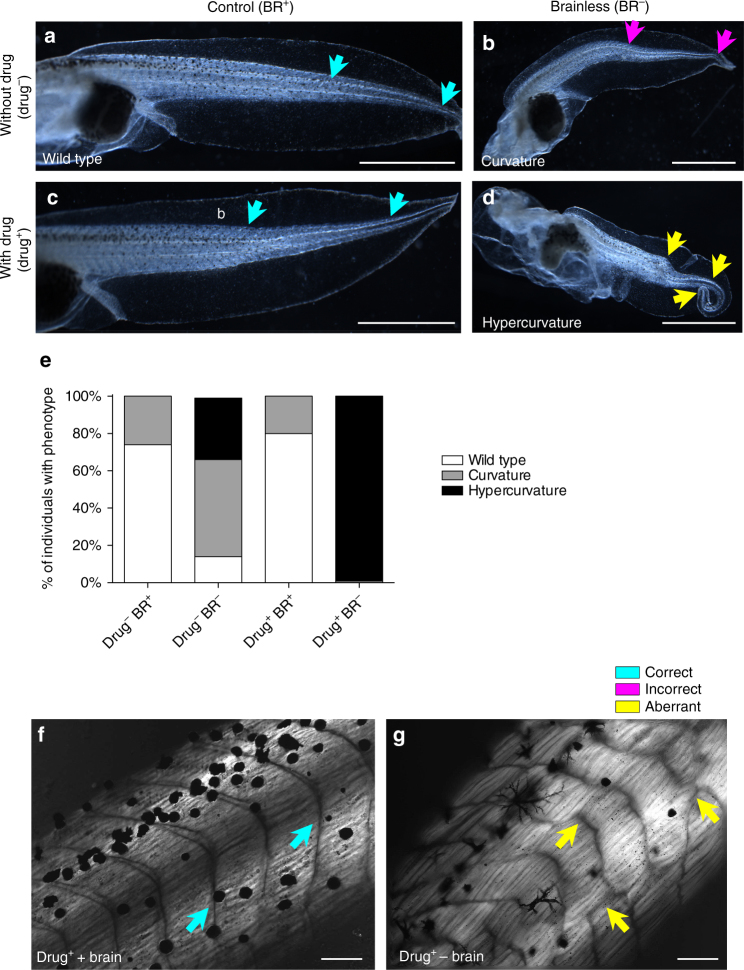Fig. 4.
The brain can prevent drug-induced abnormalities of body patterning from occurring. a–d Lateral view of stage-45 tadpoles with brain (left column; Control, BR+) or without brain (right column; Brainless, BR−) after housing in normal conditions (top row; no drug treatment, Drug−) and after continuous treatment with 10 μm (RS)-(Tetrazol-5-yl)glycine (RS, an NMDA receptor agonist), respectively. Drug treatment in Control animals (c, Drug+ BR+) did not produce alterations in tail patterning (turquoise arrows in c similar to a), and there was no incidence of aberrant or hypercurved phenotypes. Drug treatment in BR− animals (d, Drug+ BR−) lead to a completely aberrant population, with highly curved phenotypes (different to those in BR− without drug treatment, yellow arrows in d compared to magenta arrows in b). Rostral is to the left and dorsal is up. Turquoise, magenta and yellow arrows indicate correct, incorrect and aberrant tail modules, respectively. Scale bar, 1 mm. e Analysis of the phenotype distributions within each experimental group showed that RS is able to induce a significantly aberrant body patterning (a ‘hypercurvature’ phenotype) only if the brain is absent. Data represent the pooled distribution of three replicates (n = 75 animals per group). P < 0.01 for X 2 (0.05, 6). f, g Evaluation under polarized light of drug-treated animals, with brain (f) and without brain (g), revealing clear muscle defects, both in structure and overall patterning, when the brain is not present (yellow arrows in g). This disorganization is not present in drug-treated control animals, exhibiting normal somites and myotome fibers (turquoise arrows in f, see Fig. 2c for similarity to Ctrl group). Turquoise, magenta and yellow arrows indicate correct, incorrect and aberrant muscle structure, respectively. Scale bar, 100 μm

